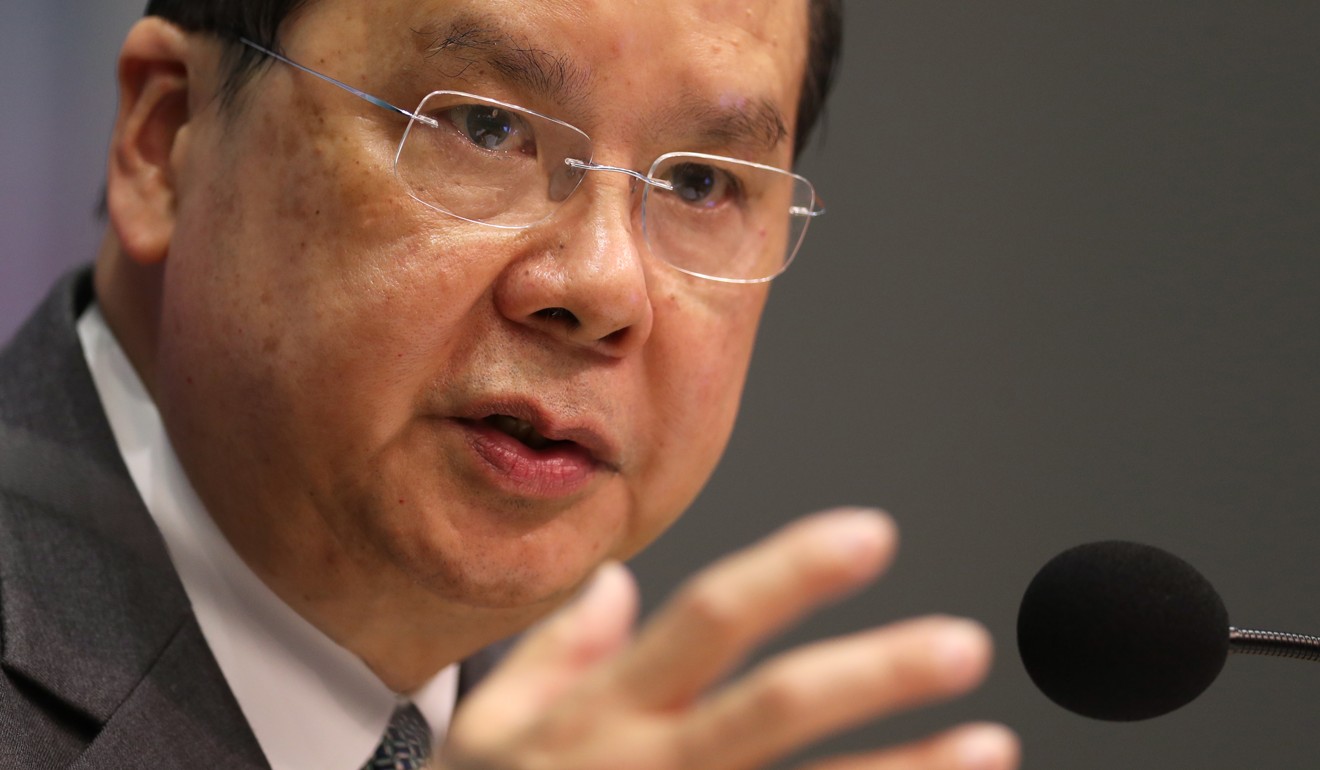
Will voices of Hong Kong’s youth be louder than ever with 10 more advisory committees recruiting?
Chief secretary announces plan as part of drive to engage the young, but concern group says selection panel should be filled with their peers and not government officials
Ten more Hong Kong advisory committees will take in young members as the government expands a pilot scheme to involve the city’s youth in policymaking.
A week after an 18-year-old university student became the youngest member of the high-level Youth Development Commission, Chief Secretary Matthew Cheung Kin-chung on Thursday said the government would raise the proportion of youth across its advisory and statutory bodies, which number about 500.
The aim is to increase this group from 8.5 per cent to 15 per cent of some 5,900 non-official members by 2022, and more than 380 young members would be needed.

Cheung said: “Ten more committees will receive new members to advise on topics ranging across land and development, environmental protection, education, transport, social welfare, home affairs and community building.” Applications would start in June, he added.
Under the pilot scheme, applicants must be aged between 18 and 35, and they will be selected by a nine-member recruitment committee led by the Home Affairs Bureau chief.
Youth policy observers said the government should also look into how the voices of those from all walks of life could be heard.
Hong Kong youth commission starts work, as teenager becomes youngest adviser to the government
Naomi Ho Sze-wai, a founding member of concern group Youth Policy Advocators, said the new members should be chosen by young people instead of a committee made up of officials and government advisers, so that youngsters from the grass roots and those with critical opinions about the administration would not be weeded out.
According to the concern group, some 70 per cent of the Youth Development Commission’s members are pro-establishment or government-friendly, and only one is aged below 24.
“The scheme should increase its recognition among youth in two ways,” Ho said. “One is to include young people in the recruitment committee, and the other is to restructure the advisory committees so that young representatives can bring more concerns of the city’s youth, including housing and financial issues, into the policymaking process.”
To Siu-ming, a social work associate professor specialising in youth empowerment, said the government should also propose a way to absorb ideas from young people regardless of social strata.
“There are many youth activities and organisations outside the government – some are district-based and some are initiated by a group of eager youngsters, which can be good sources of recruitment,” To said. He was a member of the Commission on Youth, the predecessor of the Youth Development Commission.
New youth policy report in Hong Kong slammed as ‘a show’
Within a month last year, the pilot scheme attracted 1,121 people between the ages of 18 and 35 recommending themselves for 11 seats in five committees.
More than 800 applicants also agreed to submit their personal information to the central database of the Home Affairs Bureau. Cheung said with such details, it would be easier for the government to get in touch with them again in subsequent recruitment efforts.
The first five committees which recruited under the pilot scheme when it launched were: the Action Committee Against Narcotics, the Committee on Innovation, Technology and Re-industrialisation; the Committee on the Promotion of Civic Education; the Environmental Campaign Committee; and the Youth Development Commission.
There were more than 1.65 million people aged between 18 and 35 and 776,709 people aged between 15 and 24 in Hong Kong – 23.5 per cent and 11.1 per cent of the total population respectively – according to a 2016 population by-census.

